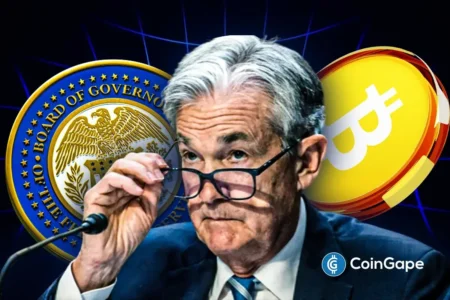The Ongoing Crypto Market Crash: An In-depth Analysis
The cryptocurrency market has been facing severe turbulence in November, with the global market cap plummeting from $4.28 trillion to a six-month low of $3.27 trillion. Leading cryptocurrencies like Bitcoin and Ethereum have experienced significant downturns—23% and 36% losses from their all-time highs (ATH), respectively. Market expert predictions indicate that further declines in altcoins may be expected, especially as JPMorgan sets Bitcoin support at $94,000. As the Crypto Market Fear & Greed Index has sunk to 15, denoting extreme fear, traders and investors alike are bracing for a potential fallout in crypto valuations.
Macro Factors Impacting Crypto Valuations
The broader economic climate is contributing to the crypto market crash. Recently, U.S. President Donald Trump signed legislation to end the longest government shutdown in history, lasting 43 days. Yet, the White House chose not to release critical data on the Consumer Price Index (CPI) or employment figures for October. Federal Reserve officials, particularly Neel Kashkari, have raised alarms about escalating inflation, leading to a retraction in market expectations for a rate cut in December. According to the CME FedWatch tool, the likelihood of a 25 basis point (bps) Fed rate cut has decreased from 62.9% to 52.1%, mirroring Fed Chair Jerome Powell’s hawkish stance that has spooked crypto traders.
Impacts of $4.7 Billion Options Expiry
Adding fuel to the fire, the $4.7 billion crypto options expiry has exacerbated trading volumes, contributing to the ongoing crash. Over 41,000 Bitcoin options—with a nominal value of approximately $4 billion—are set to expire today on the Deribit exchange, resulting in a put-call ratio of 0.7 and a max pain price sitting at $105,000. The latest trading data reflects that the put volume has exceeded call volume, signaling that traders are actively hedging against potential losses, anticipating Bitcoin may slip below $95,000. Similarly, 233,000 Ethereum options are also expiring, indicating bearish sentiment as the put-call ratio has settled at 0.91.
Institutional Outflows from Bitcoin and Ethereum ETFs
The trend of outflows from Bitcoin and Ethereum ETFs is raising eyebrows. Bitcoin ETFs alone have recorded a staggering net outflow of $866.7 million, with names like BlackRock’s IBIT and Grayscale Bitcoin Mini Trust ETF at the forefront, witnessing significant declines. The cumulative sentiment points toward a waning interest among institutional investors, as they appear to be reallocating their portfolios toward other cryptocurrencies such as Solana and XRP. Meanwhile, spot Ethereum ETFs have recorded over $259.6 million in net outflows over three consecutive days, reinforcing a bearish outlook on this particular asset class.
Profit Booking by Long-term Holders and Whales
As reported by CoinGape, both long-term holders (LTH) and crypto whales had anticipated Bitcoin’s peak back in October, following historical patterns where BTC reaches its zenith approximately 12-18 months post-halving. Data from Coinglass has revealed that liquidations in the crypto market have exceeded $1.1 billion, with a staggering 237,000 traders being liquidated within just 24 hours. The largest single liquidation on crypto exchange HTX saw a BTCUSDT position worth over $44 million liquidated. Notably, long positions accounted for the majority of liquidations—over $900 million—suggesting a drastic shift in trader sentiment.
Predictions and Future Outlook
As the crypto market declines, Bitcoin’s price nosedived by more than 5%, reaching an intraday low of $96,840, while Ethereum and XRP saw drops of 10% and 8%, respectively. The negative trends are intensifying, prompting market experts to predict further downturns in crypto valuations. A notable analyst, Arthur Hayes, has shown an inclination to capitalize on dips, targeting a future BTC price of $1,000. However, entities like 10x Research have cautioned that the signs of a bearish market were apparent weeks ago.
Conclusion: What Lies Ahead for the Crypto Market?
In summary, the ongoing crypto market crash is fueled by macroeconomic jitters, pronounced institutional outflows, and profit booking among seasoned crypto investors. As negative sentiment envelops the market, traders must stay vigilant and approach with caution. The unpredictable nature of the crypto landscape means that conditions may remain volatile for some time. Ultimately, while the current climate sees investors retreating, the long-term outlook will hinge on how macroeconomic factors and market sentiments evolve in the coming weeks.
















